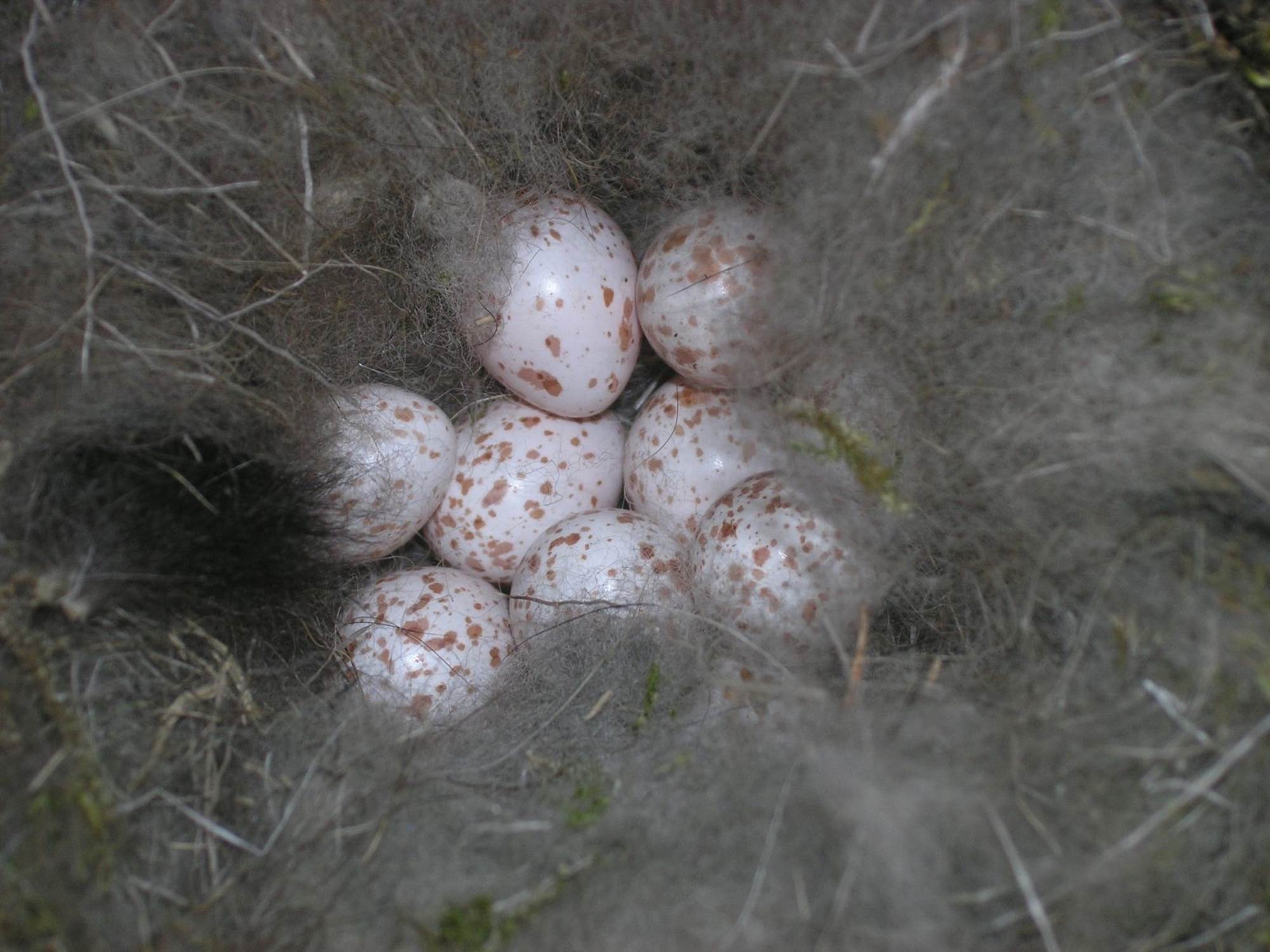Science news of the bird of the year conveyed by Marko Mägi, marko.magi@ut.ee
Translation Liis
.
Calcium is necessary for the normal functioning of the organism and the development of bones, for birds also for breeding making up the larger part of the egg shell and giving it resilience. Nearly 90% of the calcium in the organism of birds is tied in the bones..
In case of calcium deficiency the structure of the egg shell changes which may end with the death of the developing foetus. The foetus gets its initial calcium from the egg shell and because of that the need of calcium of birds in the egg-laying period is higher than usual . During that period wild birds search for calcium-rich objects such as snails, the pieces of whose houses can be found in the nests, and small gravel. For domestic poultry it is common to offer them egg shells. In the 1990ies interest was taken in whether and how the lack of calcium in natural conditions, primarily in areas that were influenced by acid rains, would hinder the breeding of birds. With the acidification of the environment the amount of calcium-rich materials is also reduced and the birds have difficulties in finding the necessary minerals for egg-laying..
At the end of last century the acidification problems were not current in Estonia but at the University of Tartu interest was taken within the frame of bird ecological studies in the possible effects of calcium deficiency. The studies in the Kilingi-Nõmme area for instance showed that in conifer forests there were significantly less snails than in broadleaf forests. This hinted at the fact that that the breeding of birds might differ by habitats, because instead of other vital activities such as building a nest, caring for oneself, or feeding, time has to be used for finding calcium-rich objects.
To study the effect of calcium already before the egg-laying poultry egg shells were placed in a vessel attached to the nestbox for a part of the great tits and also pied flycatchers; the other part of the birds had to make do with what was available in nature. It turned out that that the calcium abundance of the environment was a component that significantly influenced the breeding of birds in our forests too. The birds that could get calcium at any time started their egg-laying earlier and their eggs were larger and the shells thicker. At the same time the eggs of both species in conifer forests were smaller than in broadleaf forests.
A large part of Estonian great tits lay two clutches during the summer and so also the effect of calcium on the repeated nesting frequency has been studied. It was found that calcium limits the breeding of great tits also in mid-summer, at a time when it should be easy for the birds to find calcium-rich food objects. The second clutch of the great tits that had got calcium was larger and their flying ability with longer tarsus (a bone that is placed between the shank and the toes and the length of which shows the bone development in the skeleton) chicks than in a control group of birds.
The availability of calcium-rich material is important for the breeding of birds also in the relatively unpolluted environment of Estonia. It is worthwhile remembering this and in early spring when the birds are preparing for breeding to set out some eggshells at the feeding houses, observing whether the birds are interested in the shells
Mänd R, Tilgar V, Leivits A. 2000. Calcium, snails, and birds: a case study. Web Ecology 1: 63-69.
Tilgar V, Mänd R, Mägi M. 2002. Calcium shortage as a constraint on reproduction in great tits Parus major: a field experiment. Journal of Avian Biology 33: 407–413.
Tilgar V, Mänd R, Leivits A. 1999. Effect of calciuma vailability and habitat quality on reproduction in Pied Flycatcher Ficedula hypoleuca and Great Tit Parus major. Journal of Avian Biology 30: 383-391.



